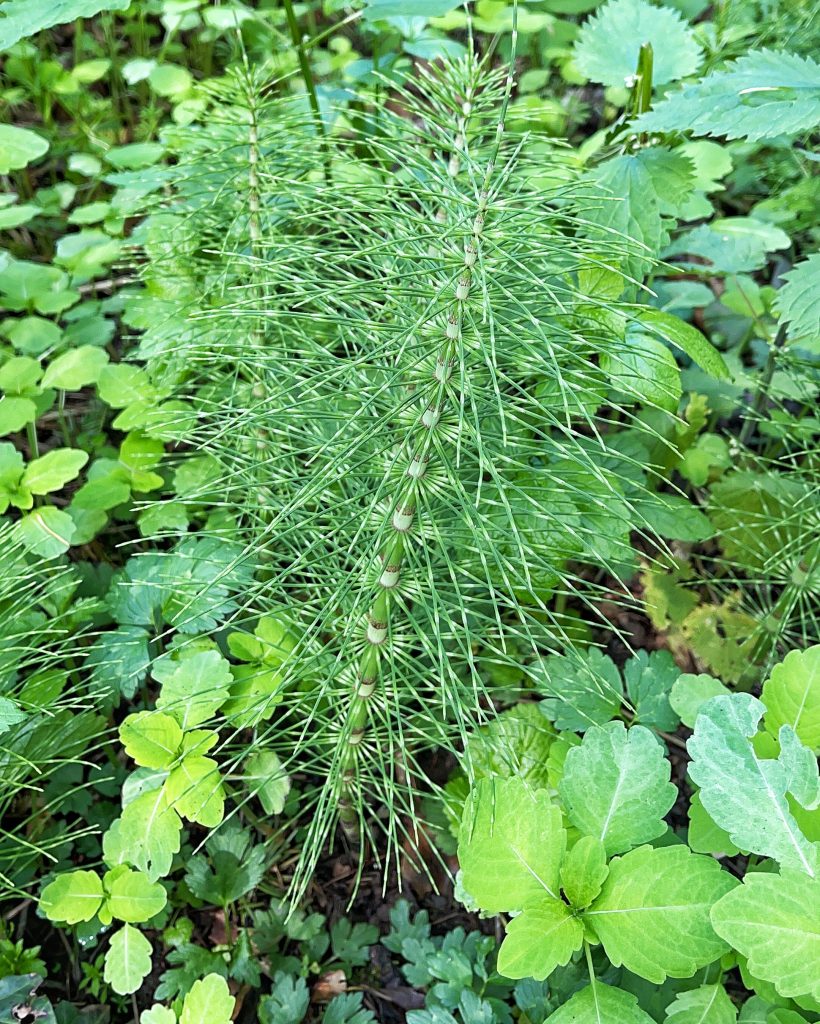
I love the texture that the branched horsetails give to the areas that they inhabit, but I’ve been reluctant to try to identify them. But, emboldened by my successful identification of Equisetum hyemale last spring, I decided to try to figure out at least one more. And I got lucky with the handsome Equisetum telmateia (commonly known as giant horsetail in our region, but also going by the names great horsetail or northern giant horsetail to distinguish it from some European species), since the length of the sheath (over 10mm) and the number of teeth on said sheath (over 14) are diagnostic traits for that species.
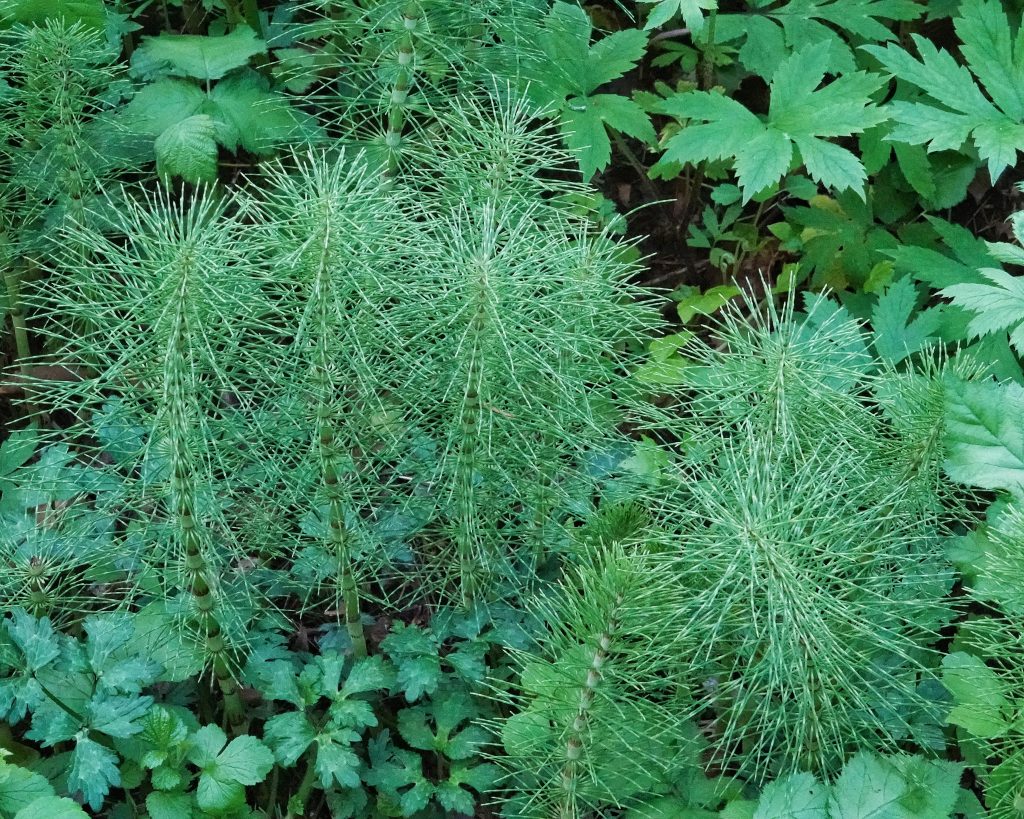
The thing I noticed most when looking at these native horsetails is that the area of the branches that is closest to the stem, and that at each joint, was consistently lighter than the rest of the branch, and was about the same color as the sheath. This contrasts sharply with the darker green of the stem above the sheath, and the dark brown/black of the teeth, and seems to form an almost geometric pattern that I found quite aesthetically pleasing. From the photos I’ve seen this pattern doesn’t seem to be repeated in other Equisetum, but I may be wrong, and I haven’t yet identified any of the other branched horsetails in our area.
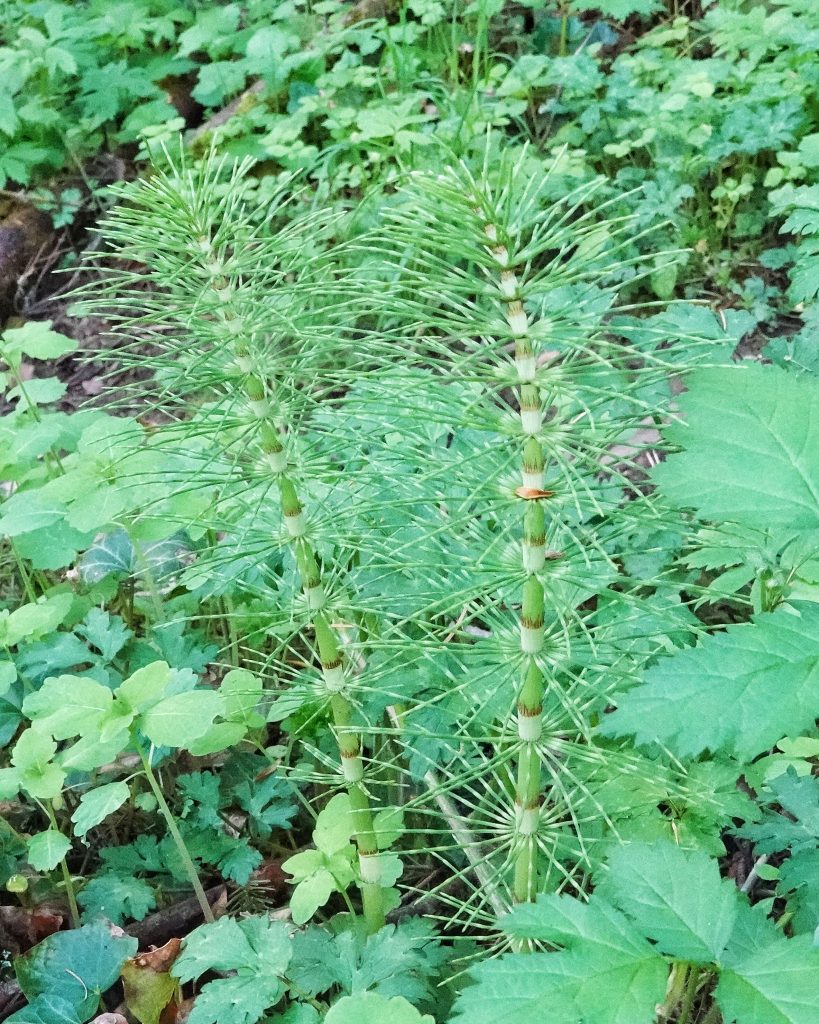
Ethnobotany– “This species was the most preferred Equisetum species of coastal native peoples as an important springtime vegetable. The young fertile and vegetative shoots were picked, de-sheathed and eaten raw. However, this genus has been known to be poisonous to livestock and humans if eaten in large quantities. Some native peoples also picked the tops of these plants, boiled them, and drank a glassful of the liquid to cure a urinary ailment. E. telmateia was one of the many Equisetum species used as medicine to treat burns; the stems were burned and the ashes applied to the wound. The silicon dioxide crystals make Equisetum species great scouring tools. Native peoples used them extensively for smoothing and polishing wood and soapstone. In fact, modern-day hunters and outdoors people still use them as scouring utensils for cleaning pots and pans.” Northwestern Oregon Wetland Plants Project template.html
“…Very small, fresh sprouts used for food…Bulbs eaten raw…Decoction of stem taken for menstrual cramps…Stem rubbed on child’s teeth to keep them from gritting their teeth…Leafless, fertile stems used as sandpaper in smoothing arrow shafts and drill shafts…Plant used as binding to fasten feathers onto the coat of a wale-pu…”. These are just a few of the 36 entries on BRIT – Native American Ethnobotany Database
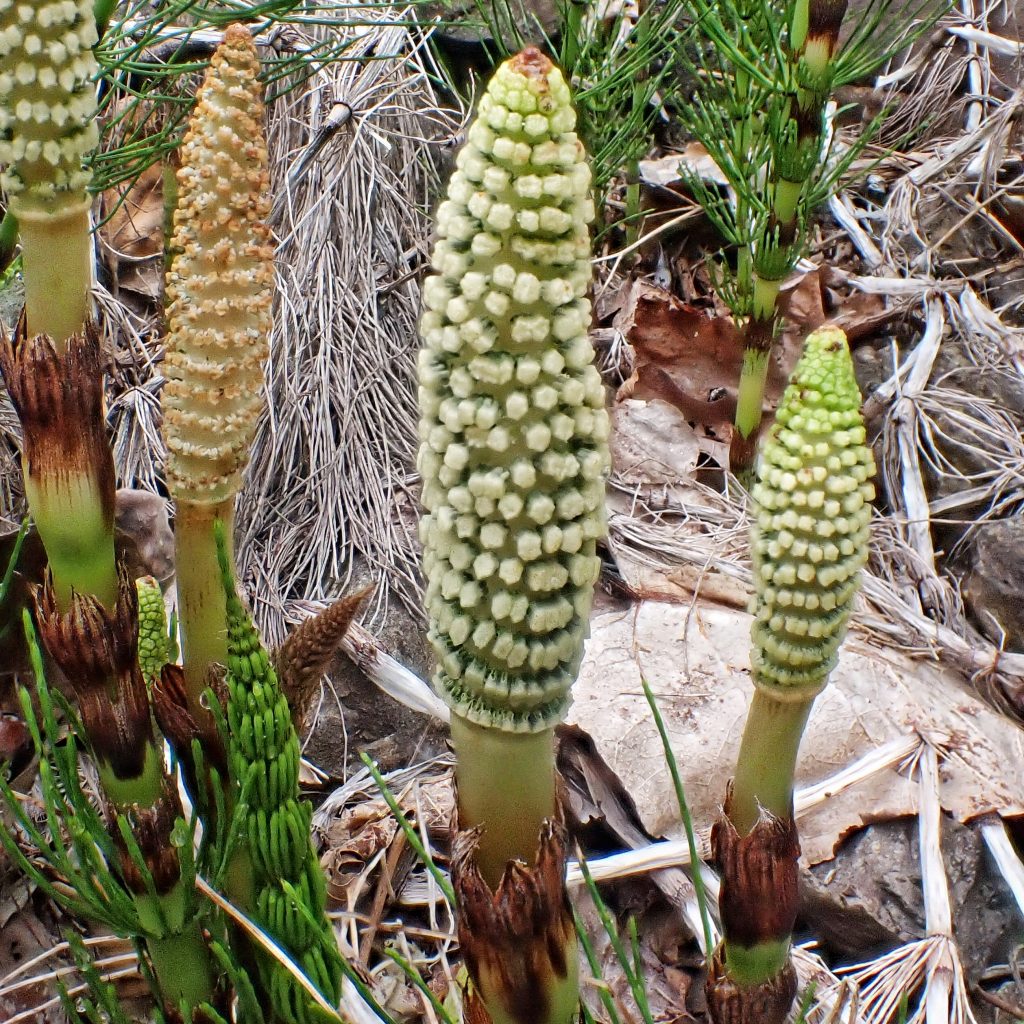
Description– “Giant horsetail is an annual herb with dimorphic stems. Separate fertile and sterile or vegetative stems are joined together by underground rhizomes. The aerial stems are erect, ribbed, hollow, and have interlocking segments. The cells walls are impregnated with silicon dioxide crystals, causing the plants to feel rough and gritty. Sheaths with persistent teeth, modified leaves, grow around each joint. The fertile stems are permanently whitish or brownish (mostly non-photosynthetic), 25-60 cm tall, 1-2.5 cm thick, unbranched and terminated with a strobilus (cone). The greenish-brown sterile stems lack cones and have fine, jointed, horizontal to descending branches developing in whorls from the nodes between stem segments. They grow to 3 m tall and 2 cm thick, have 14-40 ridges and a central cavity 2/3 to 3/4 of the diameter of the stem. The perennial rhizomes have adventitious roots arising at the nodes. The rhizomes are black, covered in felt-like hairs, and may have pear-shaped tubers at the joints. Giant horsetail is the largest of the common dimorphic horsetails, explaining its common name. Locally, our giant horsetail is the variety braunii…The leaves are reduced, darkened, bract-like teeth located atop a tubular sheath that is whorled around each stem joint. Fertile stem sheaths are 2-5 cm long with 20-30 long teeth connate in groups of 2-4. Sterile stem sheaths are 1-2.5 cm long with 14-40 teeth 3-8 mm long; they are pale below and dark above.…The reproductive structures of Equisetum species are hollow, blunt strobili growing on the tips of fertile stems. The cones of E. telmateia are 4-10 cm long and consist of a central axis to which aggregates of sporgangiophores are attached. These sporangiophores bear sporangia, each containing numerous spores. The spores are green, small and uniform in size, and have 4 thread-like elaters for dispersal.” Northwestern Oregon Wetland Plants Project template.html
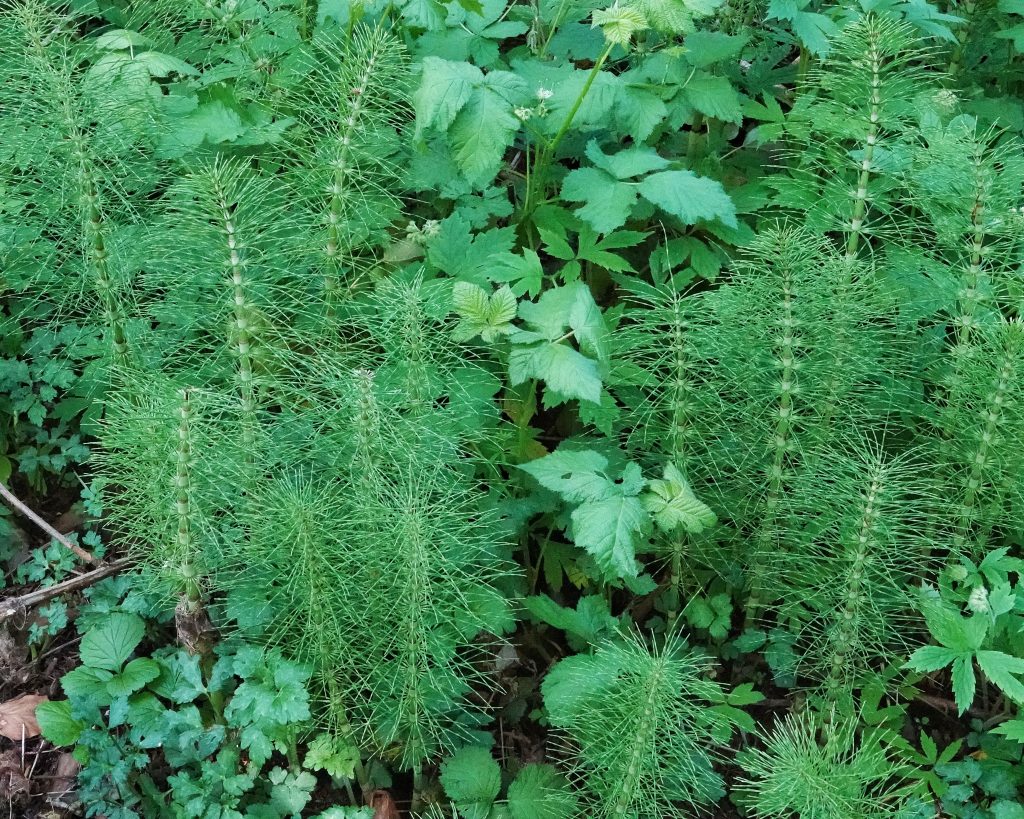
Similar species– Other horsetails have sheaths less than 10mm long, less than 14 teeth around each sheath, and the teeth are less than 5mm long, or they are not dimorphic and/or lack whorls of branches around the fertile stems;
“Although all vegetative horsetail stems look fairly similar, especially from a distance, giant horsetail is the tallest of the common dimorphic horsetails. Field horsetail (Equisetum arvense) has similar looking fertile and sterile stems, but they are much narrower and shorter, and generally less robust. Another way to distinguish smaller specimens of giant horsetail from field horsetail is the former has larger, looser sheaths with more teeth. The fertile stems of giant horsetail may be confused with the unbranched, monomorphic fertile stems of scouring rush (E. hyemale). However, scouring rush is an evergreen perennial and have sharp-pointed cones that are only 2.5 cm long.” Northwestern Oregon Wetland Plants Projecttemplate.html
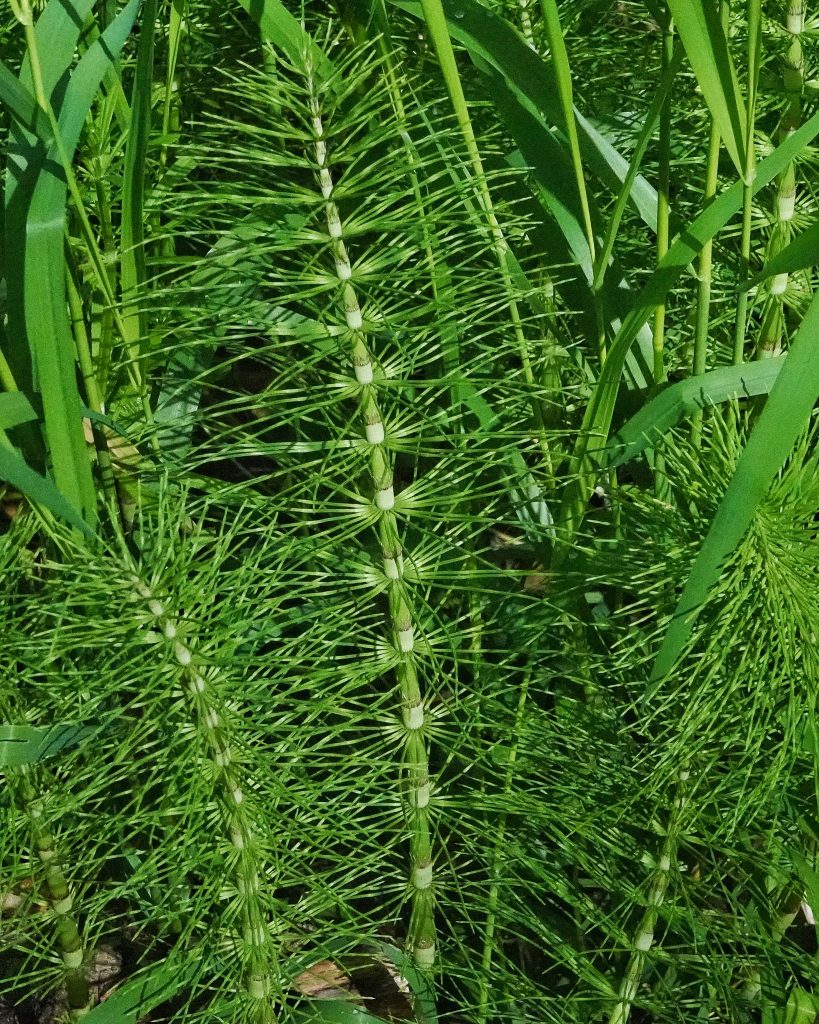
Habitat– “Giant horsetail is found at low to middle elevations usually near standing or flowing water. Dense colonies often form in moist forests and meadows, stream banks, swamps, seepage areas and gullies, giving the landscape a delicate texture. Like most Equisetum species, E. telmateia also inhabits disturbed areas such as roadsides and gravel ditches. This species is often found in association with wetland grasses, sedges and rushes, forming a dense ground cover.” Northwestern Oregon Wetland Plants Project template.html
Range– “This species is found in western North America from Alaska to southern California. On the Pacific Coast, it is only found as north as the tip of Vancouver Island, except for the Queen Charlotte Islands. Although it is found in many counties in the Pacific Northwest, giant horsetail is not as widespread as the other common horsetails.” Northwestern Oregon Wetland Plants Project template.html
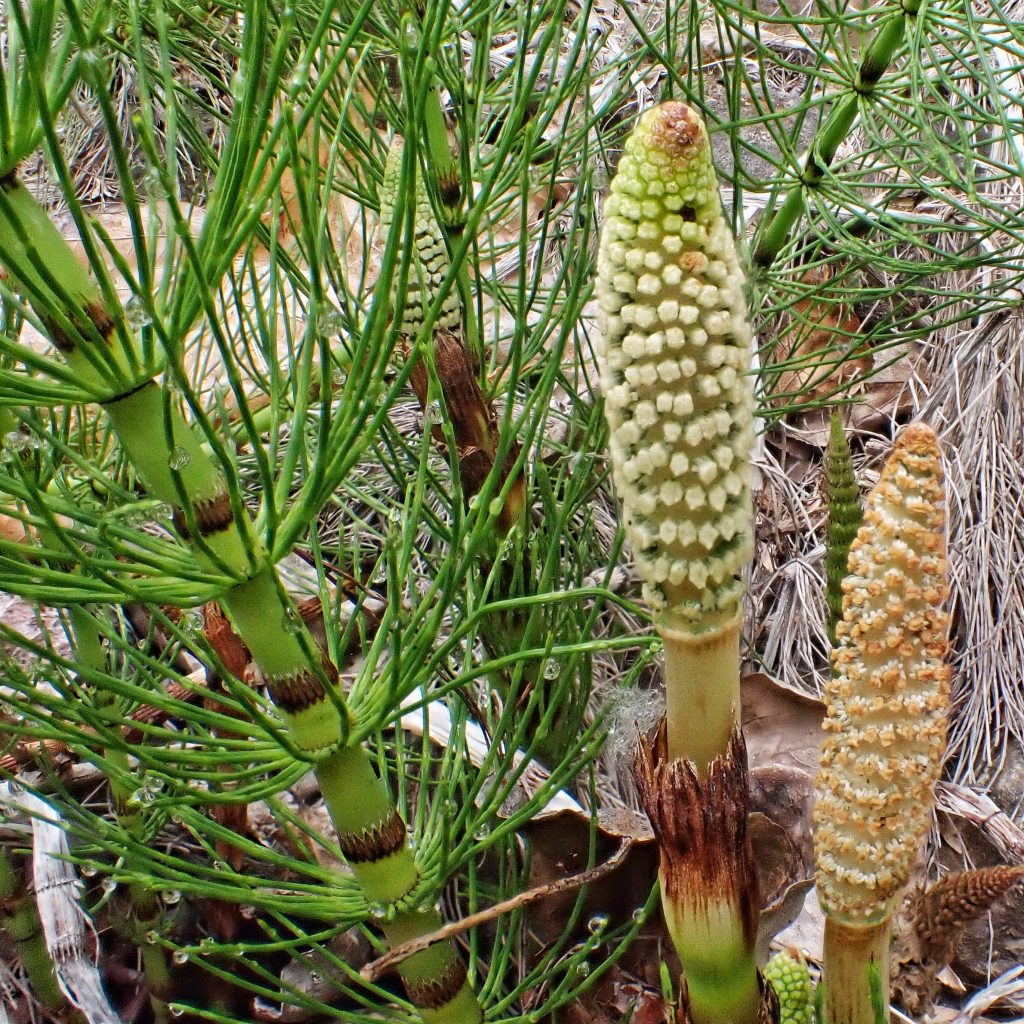
Reproductive timing– “Fertile stems arise early in the spring prior to the sterile stems, and wither soon after the spores are released.” Northwestern Oregon Wetland Plants Projecttemplate.html
Eaten by– Some members of the root maggot fly Pegomya terminalis complex probably bore into the stems; the flea beetle Hippuriphila equiseti May feed on this species; browsing wildlife tend to avoid this because of the silicate stems.
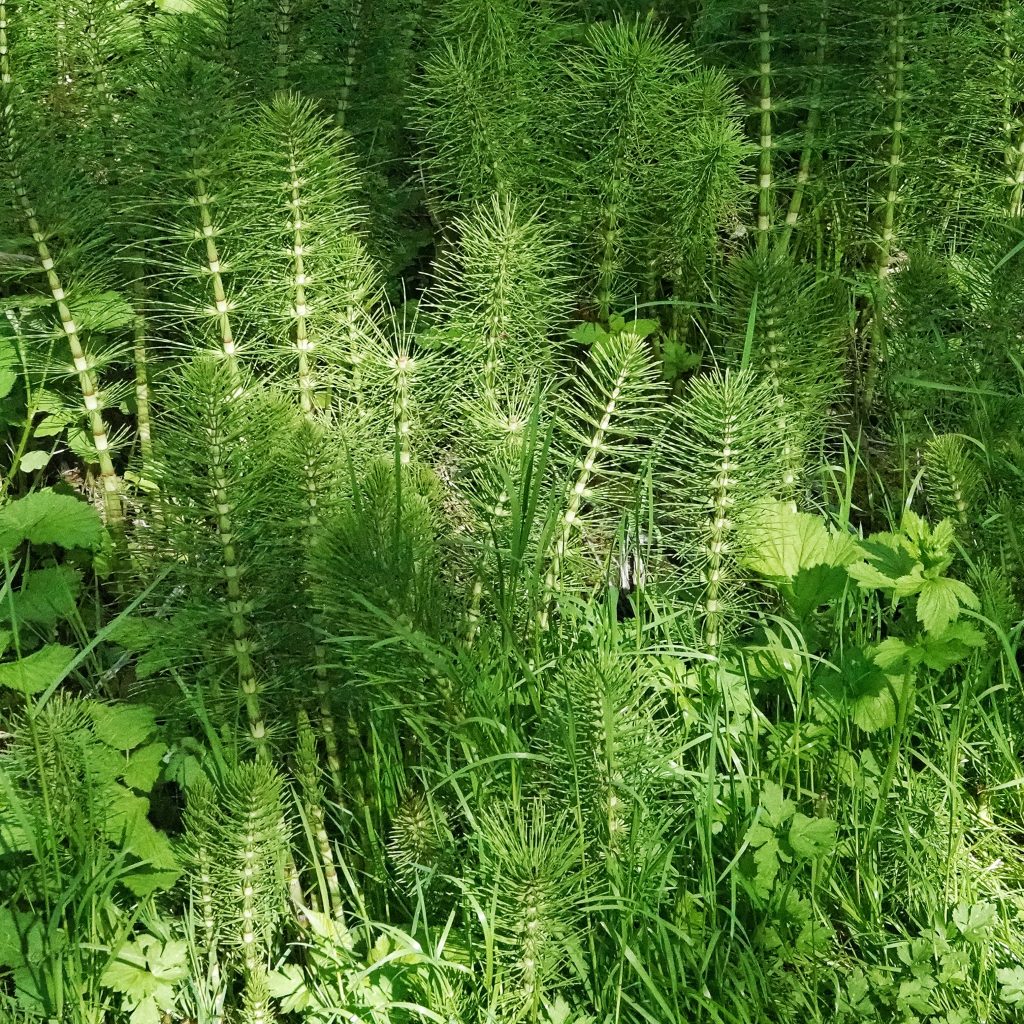
Etymology of names– Equisetum is from the Latin for ‘horsetail’, which is also the common name for the whole family. The specific epithet telmateia is probably from the Greek word for ‘marsh’, alluding to a common habitat for this species. According to Erna Gunther in “Ethnobotany of Western Washington” (1945) the Cowlitz tribe called this smu q’, the Klallam called it ma’ax, the Makaw called it ba’axbubt, and the Quileute called it tutu’tsi.
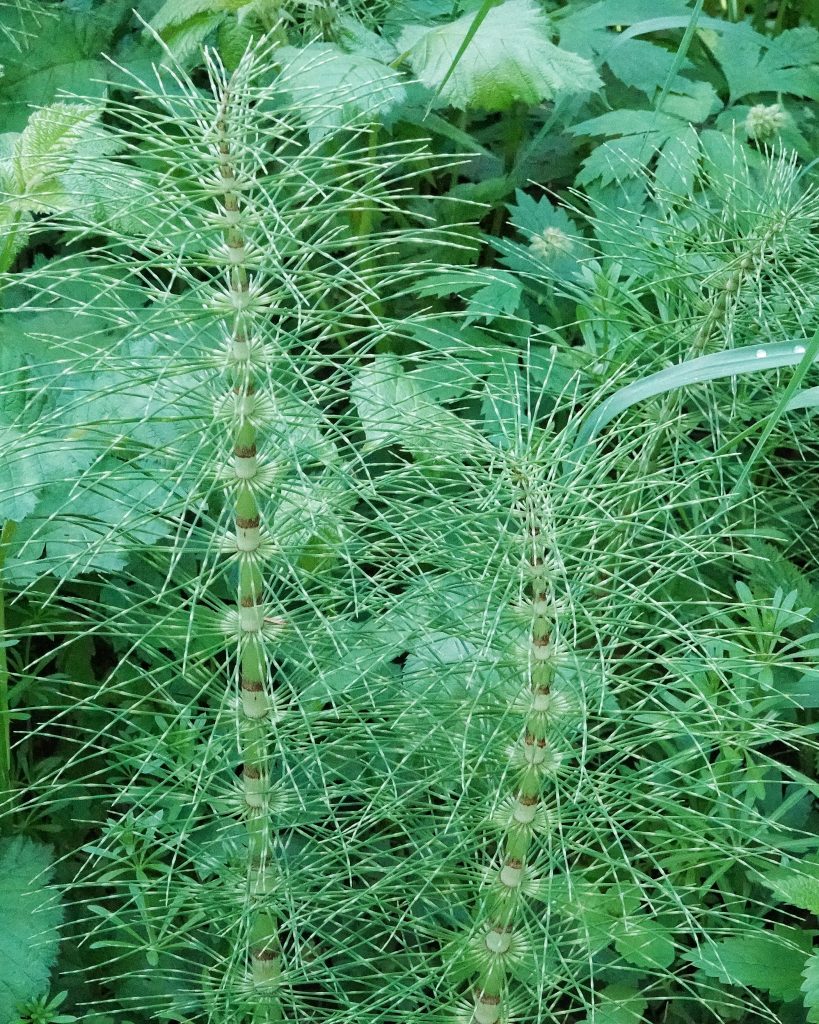
Giant Horsetail, Equisetum telmateia
Northwestern Oregon Wetland Plants Project template.html
OregonFlora Equisetum telmateia var. braunii
Equisetum telmateia – Burke Herbarium Image Collection
Equisetum telmateia Giant Horsetail PFAF Plant Database
BRIT – Native American Ethnobotany Database
https://wric.ucdavis.edu/information/natural%20areas/wr_E/Equisetum.pdf
Equisetum telmateia subsp. braunii
https://en.wikipedia.org/wiki/Equisetum_telmateia
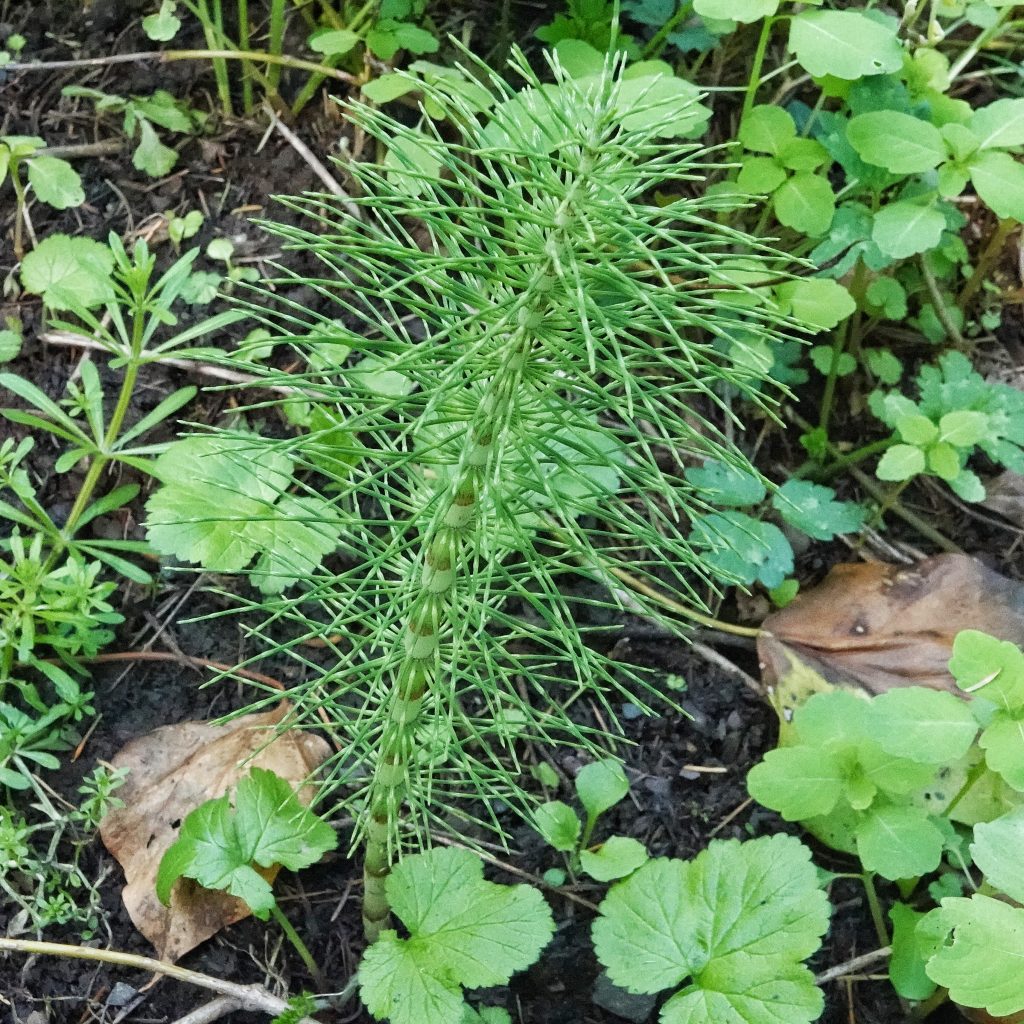
I appreciated the info on the connection of the sterile and fertile shoots. What I’m trying to understand is why many stands of E have only sterile fronds, and suddenly I see a patch with only fertile fronds. Is this really just a question of timing, and the sterile fronds will then appear? I guess I need a patch to watch over time, with regular visits.
Thanks for your appreciation, Lynn! For the most part I think you’re correct in your assumption. But some species do not have dimorphic fronds, and the cones/strobili for them appear in summer. And it can be very difficult to identify horsetails to species unless one is right next to them. Let us know what you find out!